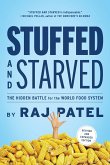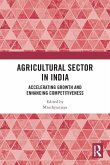Among the 17 Sustainable Development Goals (SDGs) adopted by the United Nations, SDG 1 aims to end poverty in all its forms everywhere, while SDG 2 seeks to achieve zero hunger, ensure food security, improve nutrition, and promote sustainable agriculture. To realize these vital goals, the Government of India has launched several agricultural and horticultural schemes specifically designed to safeguard farmers from financial and production losses. These schemes are implemented at the state level with the active involvement and initiatives of respective state governments. This book presents a comprehensive socio-economic impact study with concurrent evaluation of agriculture and horticulture-based schemes implemented in the state of Tripura. The study is primarily focused on two key dimensions: the evaluation of these schemes and their overall impact on the socio-economic conditions of tribal farmers in the region. The core objectives of this book are to assess whether the tribal farmers have genuinely benefited from the implementation of these government schemes and to evaluate the extent to which these initiatives have contributed to improving their livelihood. Additionally, the book examines the productivity of various agricultural and horticultural products cultivated by tribal beneficiaries and investigates the socio-economic challenges faced by rural tribal communities. This work is expected to serve as a valuable resource for policymakers and researchers interested in tribal development and agricultural sustainability.
Bitte wählen Sie Ihr Anliegen aus.
Rechnungen
Retourenschein anfordern
Bestellstatus
Storno








